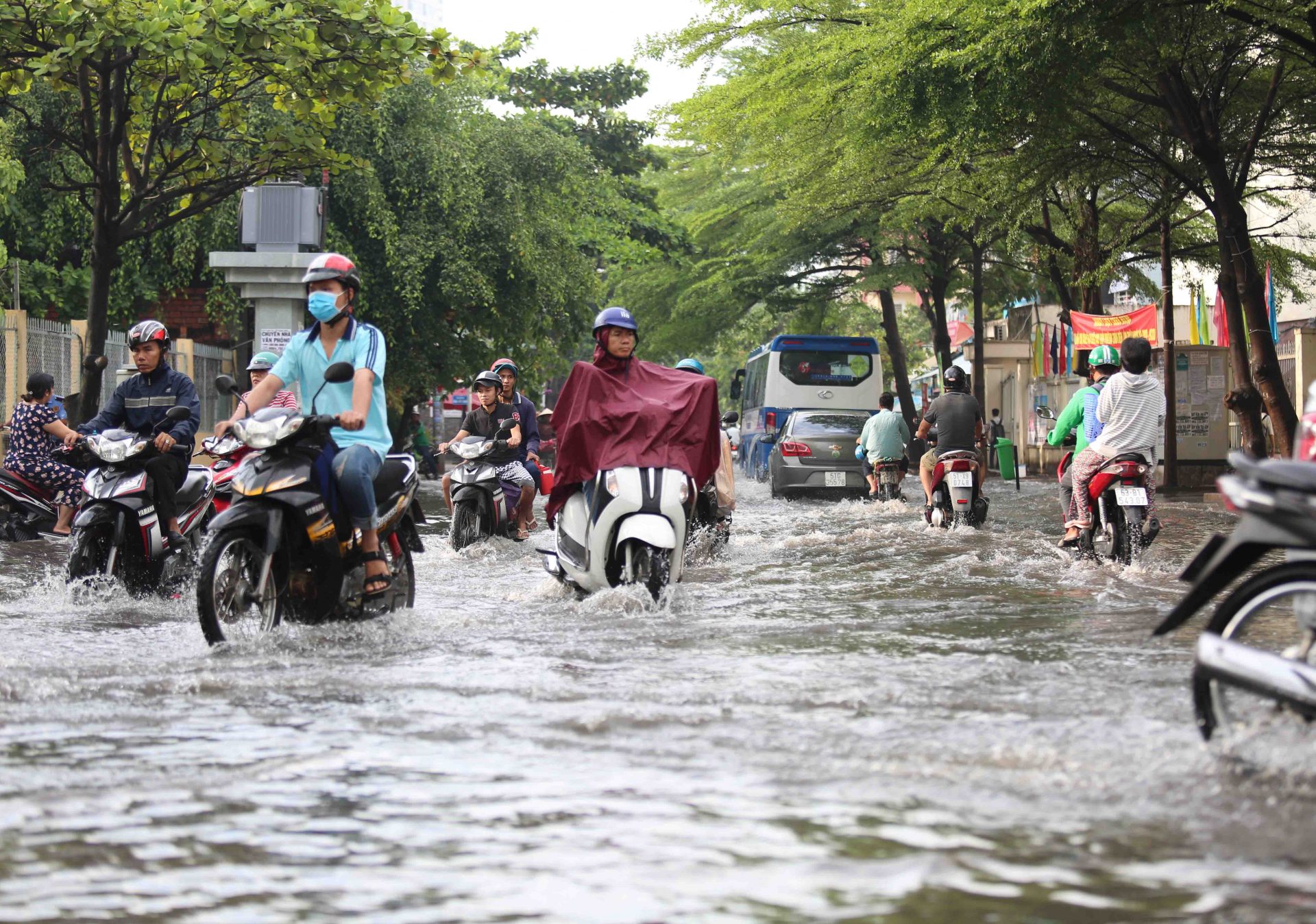HCMC – What is it like to get flooded? When I went to sleep last Thursday evening, it was raining hard. But it didn’t seem like anything to worry about. I woke up an hour later. When I looked down, I noticed that the floor was glistening. I reached down and discovered that my entire apartment was covered with a good two inches of water.
When I got up and walked around, I found that it was still raining hard. The floodwaters were just below the threshold of my front door at Red House in District 1. The water must have poured over the threshold while I was sleeping and quickly filled my apartment.
It took only a couple of hours for the water to subside. High tide was at 4:36 p.m. last Thursday, so the tide was pulling water out during the rainstorm.
I must thank the property manager at Red House. She not only had the foresight to put almost all of my possessions on high ground before the flood, but she also came by the next morning to clean up the mess.
Binh Thanh District was the hardest hit part of the city. The city’s Flood Control Center called up 500 workers to speed drainage by removing trash and opening manholes.
Some 203.2 millimeters fell on HCMC last Thursday evening, the city’s heaviest rainfall since 1984. Forecasters say that heavy rain may return as early as Tuesday. The city suffered record flooding in 2018 when it was hit by Typhoon Usagi.
The city’s VND26 trillion (US$1.12 billion) anti-flood program claims to have reduced the number of “flood hotspots” from 126 in 2016 to 22 now. As part of a separate VND420 billion (US$18 million) project, Nguyen Huu Canh Street, the victim of frequent flooding, will be lifted by 0.5 to 1.2 meters. This street connects District 1, the city’s traditional downtown, with the expat community in District 2.
Although Vietnamese culture puts emphasis on spring as a season, the weather cycle in the South does not in fact follow a four-season pattern. Meteorologists classify HCMC as having a two-season topical climate. Rainy season starts in May and continues until November. There is a short downpour each afternoon. Flooding normally peaks in October, so things may get worse.
The dry season runs from December to April. April is a few degrees warmer than other months. Otherwise the temperature is stable year round.
Vietnam experiences floods almost every year, especially in the Red River and Mekong deltas. In 1971, the Red River delta witnessed one of the worst floods in world history.
The problem of rising sea level has attracted a great deal of attention internationally. For the last 25 years, the world’s oceans have been rising at the rate of 3.2 millimeters a year.
In the Mekong delta, the land is subsiding ten times faster than the sea is rising. Illegal sand mining plays a major role.
In HCMC, the districts of Binh Chanh, Binh Tan, 8, 7, 2, 12, Thu Duc and Nha Be are subsiding at a rate of 5-10 millimeters per year, according to a study by Dr. Le Van Trung of the HCMC University of Technology. Between 1992 and 2016, the city subsided by 0.4 meter.
Economic development will increase the weight that the land must support and speed up the rate of subsidence, as will the extraction of ground water. This will increase the city’s vulnerability to flood in the years ahead, according to a report by the McKinsey consulting firm. The report predicted a tenfold increase in extreme flooding by 2050. The firm’s worst case scenario imagined a 180-centimer sea level rise inundating 66% of the city. After a major storm, the city center would be an island.
By Peter Kauffner











